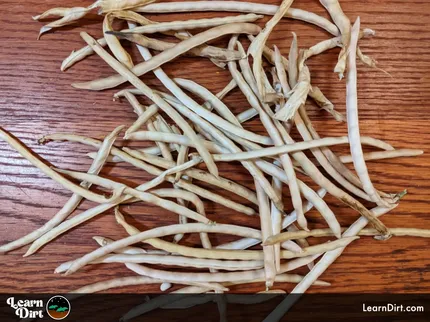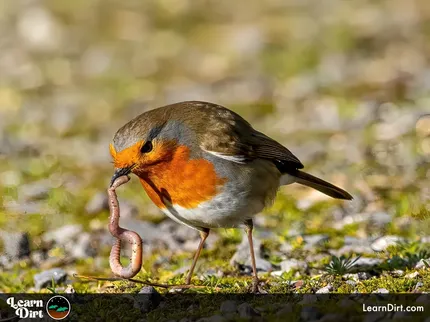Table of Contents
* Our articles never contain AI-generated slop *
Like anything, soil is expensive because people are willing to buy it. If nobody bought soil, its price would drop to zero. That's economics, baby!

The truth is, the best quality soil can't be found in a bag at a store. It's only grown at home (or in a forest). We're going to discuss why building your own soil is not only cheaper - but also healthier for your plants and the planet!
Soil Costs
Let's look at why exactly soil is so expensive, and then we'll delve into all sorts of ways to build your own and mitigate soil costs for your garden.
Disclaimer: This post may contain affiliate links. Refer to the privacy policy for more information.
How Expensive Is Topsoil?
Topsoil is relatively affordable if you only need a bag or two, but it rapidly become cost-prohibitive if you need to fill whole raised beds or plots.
Many garden centers will sell you larger volumes at discounted prices, though you'll need a truck to buy these quantities as they don't come in bags.
Regardless of whether you buy yoir soil by the bag or by the truckload, however, the cost can become difficult to justify if you have a whole garden to fill.
Also keep in mind that topsoil is of a lower caliber than garden soil, missing amendments, nutrients, moisture-holding components, textural components, etc.
While you can use it in your garden, you'll have to add other ingredients in order to get great yields and see your plants realy thrive.
We won't leave you without solutions though! Keep reading, later in this article we'll delve into soil-building and how you can create your own soil and improve the soil you already have - great ways to save a TON on dirt.
Join The Grower's Community
Whether you cultivate vegetables, house plants, succulents,
mushrooms, flowers, cannabis, or more...
you're welcome here 🌱
Check It Out!
Why Is Garden Soil So Expensive?
If you buy your garden soil at the local big box store, you might be surprised at what went into getting to to you.
Global supply chains may source peat moss from Canada, forest topsoil from Oregon, langbeinite mined in New Mexico, seabird guano from Peru, kelp meal harvested in California, AZOMITE from Utah, etc.
One bag of dirt may have travelled many thousands of miles cumulatively to reach your garden. Ecosystems were disturbed and fossil fuels were burned to make it happen.

Luckily there's a better way!
(keep reading to learn how)
If you purchase soil, you're spending hard-earned money on something that you can build yourself at home for free. If that soil isn't produced locally, you're also sending money out of the local economy while increasing the distance that dirt has to travel to get to you.
Can You Make Soil?
The alternative to paying hard-earned money for environmentally-unfriendly bags of dirt is, of course, to simply make it yourself!
It's so obvious it's often overlooked, but making soil is possible, rewarding, exciting, and so foundational on your journey as a regenerative gardener.
Just like growing your own veggies is the way to get the highest quality produce possible, building your own soil is the way to get the highest quality soil possible.
you can absolutely make your own soil at home for free, and never spend another penny on bags of dirt. It's true! This is the fine alchemy of soil-building.

Compost like this can be a primary constituent of your soil if you garden at a small scale. This provides the full spectrum of organic matter, macro-and-micro-nutrients, trace minerals, beneficial bacteria, mycorrhizal fungi, and various other decomposers.
If you garden at a larger scale and cannot provide enough compost to make a dent in powering your fields or rows no matter how hard you try, we'll cover soil-building next, which is the scalable solution.
Why Make Your Own Soil?
Building your own soil is not only far less expensive than purchasing it, it's also more sustainable and the quality is infinitely higher!
As mentioned above, building your own soil cuts your supply chain miles from thousands down to zero. It cuts your soil price down to almost zero. It helps repair your ecosystem, rather than tearing some up to get peat or topsoil.
Most importantly, you can create soil of an unparalleled caliber, and you can do it at any scale!
How to Make Soil
Just about any soil mix can be made with a base of homemade compost, and various other ingredients added as supplements, textural elements, on moisture-holding components.
Here we're looking at ways you can combine ingredients to make the right mix for your use case, at a lower cost than buying it pre-mixed
Composting
Composting is the core pillar you'll want to learn and perfect in order to make your own soil mixes.
Check out our guide to creating incredible quality compost at home, and then come back here and keep reading once you've got a batch of black gold ready to go.
Potting Soil
For a general-purpose potting soil mix, check out our potting soil mix recipe.
Houseplant Soil
For a solid houseplant mix you can rely on, check out our houseplant soil mix recipe.
Succulent Soil
For a great succulent soil mix, check out our succulent mix recipe.
Dig Cool Merch?
Soil-Blocking Mixes
If you're into soil-blocking, check out our soil-blocking mix recipes here.
Raised Bed Garden Soil
To fill entire raised beds, we like the hügelkultur method as an inexpensive way to create a lot of soil filled with slow-release nutrients that will keep getting better every year.

Read all about hügelkultur in our guide here.
How to Turn Dirt Into Soil
Turning dirt into soil, also know as soil remediation, is our absolute favorite topic here at Learn Dirt!
This is a core focus of regenerative gardening, and you will find many articles on this site that delve into this and adjacent topics.
Let's look at a few supporting pillars or regenerative gardening as an introduction if you'd like to learn more:
Soil-Building
An understanding of soil-building relies on knowing what soil is and where it comes from in nature.
Soil is comprised mainly of the following components in order of amount (highest to lowest):
- Water
- Carbon
- Nitrogen
- Phosphorus
- Potassium
- Calcium
- Magnesium
- Sulfur
- Other Trace Minerals (Cl, Cu, Fe, B, Mn, Mo, Ni, Zn)
- Organic Compounds
Water has primacy, and you'll have to take care of that one before growing a garden. If you're in an arid environment I highly recommend setting up an irrigation system at the start of any new gardening venture.
Once you have water handled, we can move on...
One major realization you'll have in studying soil-building is that the majority of these macronutrients and trace minerals are naturally present in most native geology (sand, silt, rocks).
Further, that a thriving soil microbiome can readily extract these elements, via creation of carbonic and acetic acids and microbial weathering - making them bioavailable to plants.
In fact, carbon and nitrogen are really the only two soil components which you'll have to introduce in sizable quantities if you've got poor or degraded native soil.
Serendipitously, both carbon and nitrogen are availably in the air. How convenient!
Nitrogen comprises around 78% of Earth's atmosphere, while Carbon (as CO₂) comprises around 0.04% of the atmospehere.
Almost all plants can extract the carbon from the air, while specialized "nitrogen-fixing" bacteria can extract the nitrogen.
If you team up with the right species to extract these two critical components for your soil, and you do it in large enough volume, you'll be able to build just about as much soil as you could ever need.
To learn all about soil-building, check out our guide on How to Build Great Soil.
Chop + Drop
Chop and drop is a technique which recycles plant material back into your soil, reducing soil costs while also giving you and endless supply of free mulch.

To learn about chop and drop, check out the chop + drop guide.
No-Till
No-till interlocks with chop and drop, as 2 parts of a soil-building mindset.
Reducing or removing tillage from your garden processes is a way to preserve the soil that you already do have.

It quells soil loss due to erosion by wind and water, preserves precious microbiome health, and prevents volatilization of carbon and nitrogen.
To learn about no-till, check out the no-till guide.
That's all for now, thanks for reading!
If you have any questions, comments, or would like to connect with fellow gardeners, head on over to the forum and post there.



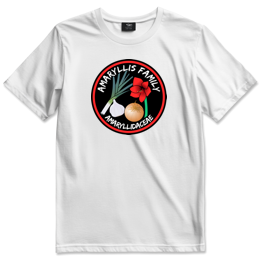
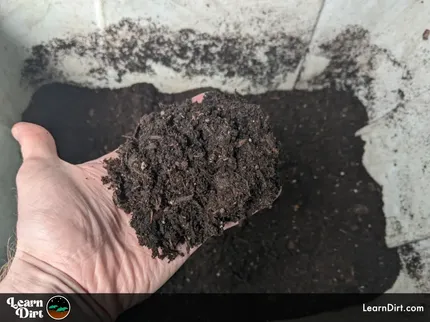





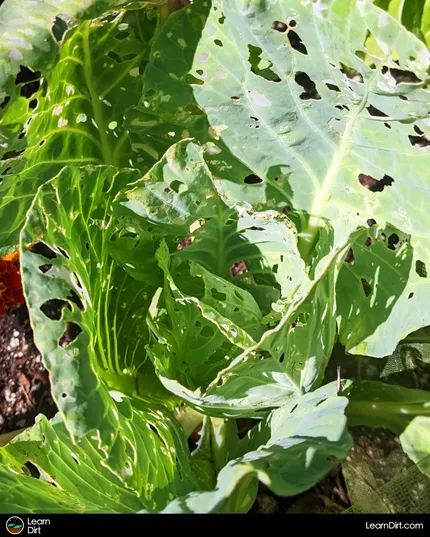




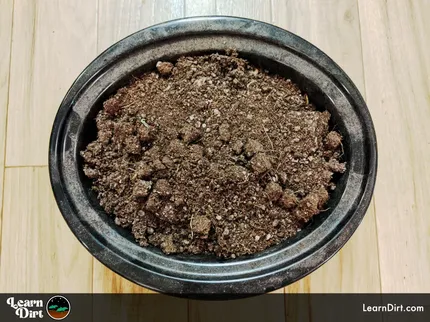
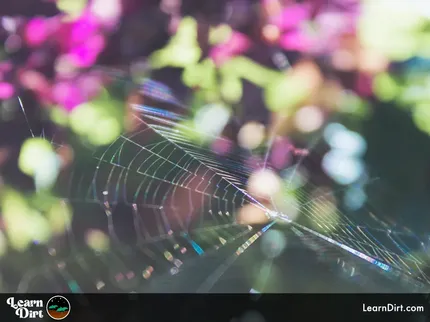




![Black Dirt Live Again [Green] Sticker](/media/product_images/black-dirt-live-again-[green]_sticker_260x260.png)


